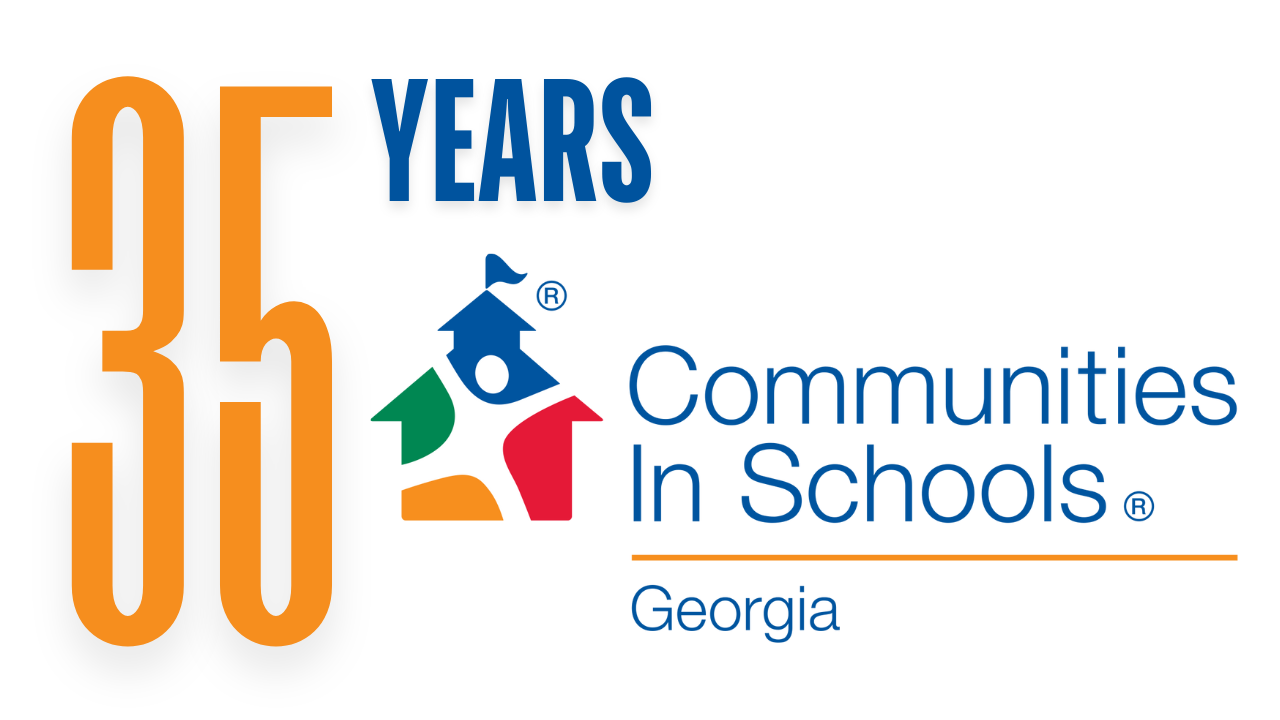 FAQ
FAQ
How does Communities In Schools of Georgia prevent school drop out?
Communities In Schools is the state’s leading organization providing wraparound student supports and dropout prevention using an evidence-based model that places a site coordinator inside the schools to assess needs, build trusting relationships with students, and connect students and their families with needed resources. CIS Georgia is part of a national organization committed to surrounding students with a community of support, empowering them to stay in school and achieve in life.
Our unique model places a site coordinator inside the schools to build relationships with students. We base success on our ability to build strong local community partnerships with school administrators, regulatory agencies, businesses and other youth-oriented organizations. Our local CIS sites tailor programs and activities to meet the specific needs of its community and schools. Types of programs include mentoring, parent education, technology training, literacy initiatives and youth leadership development.
How many students does Communities In Schools of Georgia serve?
CIS began in Atlanta and now serves over 1 million young people with programs and activities in 27 states and the District of Columbia. For 40 years we have been widely known for our dropout prevention programs, but we’re much more. In Georgia, Communities In Schools is in 244 schools across the state, and serves more than 137,500 students. We know that at-risk students are not statistics and there is no one-size-fits-all solution to the challenges they face. That’s why the Communities In Schools model is designed to be adaptable to their unique needs.
Why is Communities In Schools needed?
Everyday, many students face educational hurdles that come from outside the classroom. Hunger, poverty, family crises, low self-esteem, medical problems, violence, alcohol and drugs negatively affect a child’s chances of being successful in school and in life. Communities In Schools takes a community development approach to supporting kids by unifying the full resources of the community around children, families, teachers and schools as a support system to address these educational hurdles. Communities In Schools works at building relationships, locally and statewide – because the impact of all groups linked to the schools can achieve positive results in kids and families.
What makes Communities In Schools the “leading” organization in its field?
We are not aware of another organization with a similar mission (helping young people successfully learn, stay in school and prepare for life) that reaches such a large number of students, schools and communities, and has an equivalent history of experience and success. ICF International conducted a five-year evaluation and compared results to over 1,600 studies screened by the Department of Education’s What Works Clearinghouse. The evaluation shows that the CIS model is one of a very few organizations proven to keep students in school and the only one to document that it both increases graduation rates and decreases dropout rates. The CIS model is evidence-based and the data drives our work.
How have Communities In Schools programs helped Georgia communities?
Activities such as mentoring, tutoring, reading programs, job skills development, technology training, leadership training and parent involvement have helped kids stay in school, pass to the next grade and graduate with marketable skills.
When and where did Communities In Schools get started?
The earliest form of Communities In Schools began in the 1960’s with storefront schools in New York City to give school dropouts a second chance to earn a high school diploma and go on to college. In 1968, these “street academies” which combined personal support to students with a strong alternative educational program, received funding from the U.S. Postal Service and opened in six cities across the country. In 1973, the Atlanta program, then known as Exodus, Inc., became the dropout prevention model that was studied, refined, and replicated across the country under the name Cities In Schools, now known as Communities In Schools (CIS). The CIS national office moved to Washington, D.C. in 1983 and the Communities In Schools of Georgia state office officially incorporated in 1989. Now the national network has expanded into 27 states and the District of Columbia, serving over 1 million young people annually.
How do I get involved with Communities In Schools programs as a donor or volunteer?
To get involved with Communities In Schools as a volunteer, contact your local affiliate office: cisga.org/local-affiliates.
Communities In Schools affiliate or go to cisga.org/volunteer. To make a donation to Communities In Schools of Georgia visit cisga.org/make-a-gift or call 404-897-2972.
How do I find out about Communities In Schools programs and services in my area?
To find out about Communities In Schools programs in your area visit cisga.org/local-affiliates.
How do I develop Communities In Schools programs for my area if services aren’t already available?
To develop a Communities In Schools program in your area, please contact the Communities In Schools state office at 404-897-2974.
What are the start-up costs involved in developing a Communities In Schools program?
Under a comprehensive approach, there are minimum costs to individual communities to implement CIS. A community’s investment in establishing a local CIS initiative consists of identifying available resources, determining local needs, developing a plan, coordinating with local boards of education, hiring an executive director and support staff, raising funds to match CIS grants for start-up and support, and tracking and reporting on students served. The cost to a community of sustaining a CIS collaboration varies from minimal to modest. Many local CIS operations begin – and maintain – their staffing levels with a single executive director and an administrative assistant. Salaries and benefits vary depending on community standards; office rent and supplies may often be in-kind contributions; typical budgets also include travel, insurance and other miscellaneous costs. Larger CIS operations may require more staff and in some CIS programs staff is assigned to each school served. On average, for every $100 donated to CIS, $90 goes directly to programs and services.
How is Communities In Schools funded?
Communities In Schools, Inc., a national 501(c)3, is privately and publicly funded through a variety of corporate, foundation and federal grants. Communities In Schools of Georgia, similarly is funded through a variety of state, federal, corporate and foundation grants. On the local level, Communities In Schools sites receive funding from the CIS state office, local private sector support and various state, federal, and foundation grants. Ensuring ongoing financial support for the CIS partnership should be addressed openly by community collaborators prior to CIS implementation in order to not compete for funding directed towards local service providers.
Why does Communities In Schools require 60% of its board members to be from the private sector?
Private sector resources are the key to sustaining Communities In Schools programs that help kids succeed in school and prepare for life. Therefore, even though all segments of the community are represented on a local Board of Directors (educators, social service professionals, parents and representatives from faith-based organizations), a majority of private sector representatives are needed to create and sustain the link between local businesses and schools so that all kids can succeed.
Does Communities In Schools offer programs for adult learners?
Communities In Schools operates Family Resource Centers. Through these centers, parents of pre-school and school aged children can receive services. Some CIS programs provide adult literacy services.
What is the purpose of the Communities In Schools state office?
The Communities In Schools state office works to begin new CIS programs and also provides training and technical assistance for the local Communities In Schools sites currently operating in Georgia. The state office also coordinates certain multi-county/statewide programs.
Does the Communities In Schools state office compete with local Communities In Schools offices for funding?
The CIS state office does not compete with local Communities In Schools offices for funding. Funding for the state office comes from national foundation grants, as well as state and federal sources.
